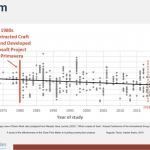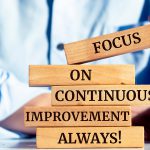By Dr. Anthony Kenneson-Adams, FInstLM, Head of Learning & Knowledge Transfer at Project7 Consultancy
Today we present the last installment of an 8-step process to enable you on your journey to Operational Excellence. We trust you will put these steps into action and power-up your journey to Operational Excellence.
Commit to your People: Committing to people during complex continuous change is essential for effective leadership. Here are some practical steps to help leaders demonstrate their commitment to their people in difficult complex continuous improvement projects:
- Communicate Transparently: Be upfront and honest with your people. Maintain open and transparent communication with your people. Clearly articulate the reasons behind the change, the expected outcomes, and the potential impact on individuals and teams. Address concerns and questions honestly and encourage a two-way dialogue to ensure that employees feel heard and understood.
- Provide Clarity and Direction: Clearly define the vision, goals, and objectives of the change initiative. Help employees understand how their roles and responsibilities fit into the bigger picture. Provide a clear roadmap and milestones to guide them through the process. When people have a clear sense of purpose and direction, they are more likely to commit and actively engage in the change.
- Involve and Empower Employees: Actively engage employees in the change process by seeking out their input, ideas, and suggestions. Create opportunities for them to participate in decision-making and problem-solving. Empower and enable them to take ownership of their work and contribute to the success of the change initiative. This true empowerment and engagement will foster a sense of ownership and commitment among employees.
- Support and Resources: Remove the barriers and provide the support and resources employees need to navigate through the complexities of change. Offer training, person-centred coaching, and active mentoring to enhance their skills and competencies. Address any skill gaps that may arise due to the change and provide the tools and resources needed to succeed in the new environment.
- Recognize and Reward Efforts: Acknowledge and appreciate the efforts and contributions of employees during the change process. Recognize milestones, achievements, and positive behaviours aligned with the change initiative. Celebrate successes and publicly recognize individuals and teams for their commitment and resilience. Never underestimate the value of a simple thank you for a job well done. This recognition reinforces their sense of value and encourages continued commitment.
- Foster a Learning Culture: Encourage a learning mindset and foster a learning culture of continuous improvement. Provide opportunities for skill development, knowledge sharing, and cross-functional collaboration. Encourage employees to learn from mistakes, adapt to new situations, and embrace change as an opportunity for growth. Show a commitment to their professional development and career advancement. Ensue that everyone know that failure can be an opportunity to stretch capability and innovation. Fail safe, fail forward and fail often.
- Lead by Example: Leaders must demonstrate their commitment to continuous change by leading by example. Model the desired behaviours, attitudes, and actions associated with the change. Be visible, accessible, and approachable to employees. Display resilience, adaptability, and a positive attitude, even in challenging times. Your commitment and behaviour will inspire and motivate your people to stay committed.
- Monitor and Address Concerns: Keep a close eye on the pulse of your people throughout the change process. Monitor their engagement, morale, and well-being. Actively listen to their concerns and promptly address any issues that arise. Provide support mechanisms, such as employee assistance programs or counselling services, to help employees cope with the stresses of change. All change can be difficult if those in the process feel they have little or no control. Engage and empower to reduce anxiety and power forward on your journey to Operational Excellence.
By following these practical steps, leaders can demonstrate their commitment to their people during complex continuous change. This commitment builds trust, fosters employee engagement, and ultimately enables successful navigation through the change process.
If you missed last week’s post you can read it here. We hope you have enjoyed this blog series and take the opportunity to ask us any questions or visit our guest contributor at www.Project7consultancy.com.










